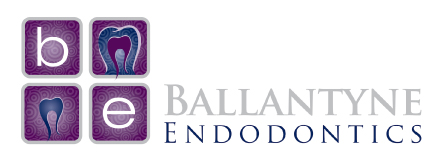Can A Tooth Infection Be Cured With Antibiotics?
If you are experiencing throbbing pain around a tooth, you may wonder whether you have a tooth infection. If you do, you may also wonder, “can a tooth infection be cured with antibiotics?”
Unfortunately, treating a dental infection usually involves much more than antibiotics. Sometimes the best treatment may not include antibiotics at all. To understand why it may help to better understand a few basics about tooth infections.
Since we are discussing infections, it is crucial that you understand this article isn’t a substitute for personal dental care. It is purely for education and information. Each person is variable, and infections may present a range of different symptoms. The most effective way to get rid of the pain is to see a skilled dentist or endodontist who can address the literal root of the infection.
Symptoms of a Tooth Infection
The first sign to getting treatment may be recognizing you have a problem. Your twice-annual dental visits and daily oral hygiene routine are intended to prevent cavities, gum disease, and infection. However, despite best intentions, people sometimes fall behind on their professional cleanings and daily oral hygiene or suffer some form of dental trauma leading to infection.
Learning to recognize some of the signs of a dental infection may help you seek treatment earlier. Be aware that a bacterial infection can lead to a tooth abscess. It refers to a pocket of pus, usually near the tooth’s root. A tooth abscess can worsen; if left untreated for long enough, you may need to lose the tooth.
The Mayo Clinic summarizes some of the key symptoms of a tooth infection. They include
- Sensitivity to changes in temperature. Does your tooth hurt when exposed to hot or cold temperatures?
- Throbbing pain that may spread or extend to the jawbone, ear, or neck.
- Pain if you bite down or chew food.
- Elevated temperature or fever.
- Unpleasant odor or taste in the mouth, including a potential rush of salty fluid.
- Swollen lymph nodes in the neck or jaw.
- Swelling in the face may lead to problems swallowing or even breathing.
- A lump near the infected tooth.
If you experience new or intensifying pain, schedule an appointment with your dentist. If you have an inflamed or infected tooth, the earlier it is treated, the better.
As time passes, the more bacteria get inside your tooth or the delicate root canal system, the more risk of escalating pain and eventually losing a tooth. Bacteria can enter through a cavity, a crack in the tooth, or other dental trauma. Once bacteria gets into the root structure, it is likely to multiply and get worse.
The Evolution of an Infection
A tooth infection or abscess doesn’t just appear overnight. It evolves and gets worse over time. The sooner it is addressed, the less pain and discomfort you experience.
- Your tooth’s outer layer is enamel, the strongest substance in your body. First, the tooth enamel wears down on a tooth or part of the tooth. This is commonly the result of plaque since bacteria cling to the plaque. This bacteria has acids that weaken tooth enamel. This may lead to a cavity eventually.
- Inside your enamel is a softer inner layer called dentin. Bacteria may enter through a cavity or crack in the tooth leading to inflammation and infection spreading in the dentin.
- Deeper in the dentin is a nerve-filled sensitive core. When infection is so deep in the tooth, a root canal is often the only or best alternative to losing the tooth.
Cavities are not the only source of a tooth infection. Gum disease can also give bacteria an entryway.
How to Treat a Tooth Infection
The discovery of antibiotics was a life-saving miracle. Antibiotics have treated many dangerous infections. However, treating tooth infections can be challenging.
Treating an infection with an abscess may involve draining the abscess, treating the primary infection, and performing a root canal to save the tooth.
While many feel anxious if their dentist mentions a root canal, in reality, many people find that a successful root canal relieves pain and helps restore well-being and oral health. In some cases, the infection may have progressed too far, and the only option is an extraction. If your dentist recommends a root canal, you still have a chance of saving the tooth and ending the infection.
While an antibiotic isn’t the gold standard for treating most dental infections, your dentist or doctor may still prescribe a course of antibiotics if the infection spreads to other parts of the body and if you are likely to benefit from it. If your dentist refers you to an endodontist and they recommend dental care, this is often the ideal, depending on the specifics of your infection.
Should You Seek Care From an Endodontist?
An endodontist is a dentist who specializes in saving teeth. In addition to dental school, an endodontist completes additional specialized training in performing root canals and other endodontic care. As a profession, endodontists promote saving natural teeth whenever possible for a variety of reasons. Nothing feels quite the same as your natural teeth.
A root canal is commonly used to treat severe infections and save the tooth. An average dentist performs two root canals per week. In comparison, an endodontist typically performs 25 root canals per week, according to the American Association of Endodontists. When it comes to your tooth, experience and skills matter. Since an endodontist specializes in root canals, they have the right tools and technologies to improve the likelihood of a successful outcome.
Schedule an Appointment
Your next step to restoring wellness is to schedule an appointment with your dentist or endodontist. If you need a root canal, consider requesting a referral to an endodontist for the best likely outcome.
Ballantyne Endodontics is proud to serve Charlotte area residents and to help free them of infection and pain. Best of all, we help save teeth so our patients can experience good oral health and wellness. Contact us today to schedule your appointment.

